I'm looking at the PCB for a bicycle headlamp. The input power to the headlamp is approximately 6 V RMS AC, from a bicycle generator hub – the same sort from this question. I've identified most of the components on the board, but one has stumped me.

The unknown component is in the red box. The two soldered leads marked with the two blue dots are the AC input from the dynamo generator.
I've searched the internet for all of the numbers on the part, together and separately. There are also a couple of logos on the part, but after looking at a website that lists common IC logos, I came up empty.
If it's worth anything, the diodes immediately around the unknown part form a bridge rectifier for the AC input to drive an LED. The power MOSFETs at the top of the image are used to switch the lights on or off based on ambient light conditions.
Another fact to note is that these sorts of dynamo hubs can generate excessively high voltages at very high speeds (e.g., going downhill), and that early versions of headlights would blow out if you didn't turn them off before going fast. Presumably this circuit must have some sort of protection to prevent this issue, since it cannot be manually turned off.

